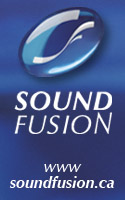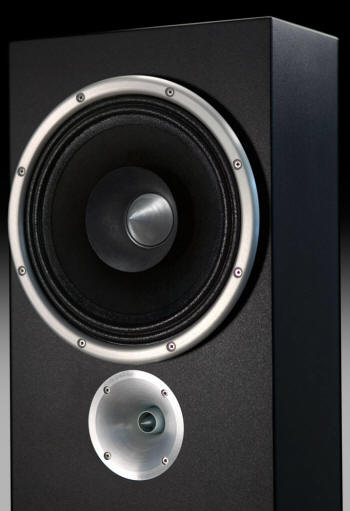
You are reading the older HTML site
Positive Feedback
ISSUE
28
zu audio
Druid loudspeakers
as reviewed by Danny Kaey

 |
|
|
You are reading the older HTML site
Positive Feedback
ISSUE
28
zu audio Druid loudspeakers as reviewed by Danny Kaey
|
|
|
It's a mad, mad, mad world. The title of that popular early-60s flick full of preposterous gags and slapstick applies to today's audiophile world. While the mass market has clearly made its decision about the "format wars" in favor of mp3s, iPods, and a host of music servers, audiophiles have reached ever-higher levels of cult worship. There are now at least a half-dozen turntables selling in the $50,000 to $100,000 range, with two manufacturers escalating their prices beyond $100K (both German: Clearaudio and Transrotor). Of course, we also have loudspeakers transcending what was once thought to be the super-fidelity price limit of $100K, and if publicly-disclosed numbers are to be believed, one well-known U.S. manufacturer has actually sold around 160 pairs, while, on the other side of the Atlantic, a small Swedish company (Marten) recently launched a $250,000 pair of Uber-speakers. Of course, turntables, loudspeakers, and amplifiers need to be connected somehow, so we also have ever-higher price points for interconnects, power cords, and loudspeaker cables.
Naturally, the iPod crowd ridicules these numbers, perhaps rightfully. Outside the context of high end audio, these prices seem to be absurdly out of touch with reality. After all, a Ferrari 360 Modena, which sells for around $170,000, contains infinitely more technology and R&D than any audio product could ever hope to offer, yet audiophiles have failed to communicate the benefit of spending this kind of money on audio. Every kid in Brooklyn knows of Ferrari, yet I guarantee you that same kid has never heard of Wilson Audio, Audio Research, or Mark Levinson, to name only a few of the most well-known U.S. high-end brands. American audiophiles have always waited for the general public to make the effort of finding us, but the outreach needed to draw fresh blood into the industry just doesn't seem to exist. Sure, there are many hi-fi shows, but the general public doesn't seem to care. Europe and Asia seem to be fairing a bit better. In those continents, the general public does seem to pay some attention to higher fidelity.
Along comes Zu. Who? Zu. Founded by two smart fellows, Zu cables and loudspeakers appear to be on the cusp of changing the tide. As the Zu guys, Sean and Adam, see it, if the general public is not interested in finding us, then we (Zu) will take hi-fi to them. I don't know if it was the spot-on age relationship (the three of us are within about a year of each other) that drew me to Zu, or the likeable, no-BS approach that Sean and Adam have always displayed at trade shows, but I immediately knew that Zu had a special thing going on. Not only do they offer three loudspeaker models at reasonable prices ($1000 to $10,000 a pair), but their mission is to advance the notion of hi-fi to the mainstream consumer.
I met up with the Zu
crew about a year ago, at a local hi-fi show, where I took possession of
a pair of their middle loudspeaker models, the Druids (the Tones are
below the Druids in the lineup, and the Definitions above). I had been
following the internet buzz that had been building about Zu, and I
wanted to find out what the fuss was about. Zu's approach to loudspeaker
design differs from that of most manufacturers. The Zu guys believe that
dynamic realism matters more than anything else in high-quality music
playback. To achieve this, they deploy several key ideas. Most notably,
they use a full-range, single-driver system built around the latest
manufacturing principles. The resulting 10-inch driver, built in-house,
is accompanied by a networked (instead of crossed over) supertweeter,
also made in house. The efficiency of the system is very high (101dB),
and the load benign (8 Ohms nominal, 12 Ohms max). Power handling is
given as 300 watts, which, paired with the efficiency, allows for
realistic levels in the listening room (too bad for your neighbors).
This virtual single-driver system (it is actually is a 1.5 system, but
since the supertweeter covers only the top octaves, it almost qualifies
as a single-driver system) offers remarkable top-to-bottom coherence
with time alignment throughout the frequency range. The speaker uses a
cleverly designed ported bass system that allows for extension to the
mid-30s.
The Druids are unusual looking loudspeakers. The only other speakers that have drawn as much attention in my home during the past few years were the Gallo Reference 3.1s. The look and feel of the Druids is superb. Their fit and finish is outstanding, and the $2800 price point is downright inexpensive for all the whiz-bang you get. To further the plug-and-play aspect, Zu burns in the loudspeakers at the factory. Zu being Zu, they don't use a simple "play the speakers out of phase" burn-in process. Rather, they employ a well-orchestrated, measured approach to the art and science of speaker burn-in. Before each loudspeaker leaves the factory, the drivers, internal wires, and ancillaries have all been exercised for several hundred hours with massive, high-current amplifiers. Sean and Adam have found that the performance of their speakers improves substantially, and that no consumer could ever hope to achieve the resulting refinement by simply breaking in the speakers at home. Speaking of the iPod generation: Care to have your Druids match your shiny new iPod Nano's green color? No problem. Just about any other color you can think of is available, as Zu employs an automotive-quality painting and finishing facility (in-house, of course).
After installing the Druids in my listening room, I experimented with placement and discovered that they liked to be placed further apart than most of the speakers that have come and gone here. Their final resting point was seven-and-a-half feet apart and roughly five feet from the side and back walls. The initial modest toe-in, which had worked well in the past, gave rather muted high-frequencies. The final toe-in was such that I could no longer make out the sides of the speakers when seated in my listening chair. I had always been somewhat ambivalent about hyper-efficient loudspeakers, most of which use horns, so I wasn't sure what to expect from the Druids, which achieve their horn-like sensitivity with dynamic drivers. The first thing I noticed about the Druids was their unlimited top-to-bottom dynamic scale at all volume levels. At several points during Curtis Mayfield's Curtis/Live! (a great concert performance available on an outstanding Rhino/Bill Inglot reissue), Mayfield accidentally hits his microphone stand. I had never paid much attention to these sonic accidents, but the Druids made them startling. I felt as if I were sitting front row center, and Curtis was about to apologize for nearly knocking his mic stand onto my table.
The Druids' dynamics, both macro- and micro-, are essential to their being. Care for a serving of Tosca's latest down-tempo lounge music? The Druids create a previously unheard sensation of dynamic "thwack," with explosive bass lines and a convincing realism that is absent from most dynamic speaker designs. The Water Lily recording of Mahler's Fifth Symphony may be the most dynamically coherent orchestral recording I have ever heard. I was always afraid to push the limits of the Marten Duke mini-monitors with this recording, but I have no such worries with the Druids. I can push the Druids to beyond-sane listening levels, while getting a realistic sense of the size of the recorded space. Dynamic compression is non-existent with the Druids. Other speakers may claim to offer the equivalent of a live event, but the Druids truly deliver, in spades. Of course, there's more to realistic music playback than dynamics, but the Zu guys believe that if your speakers are dynamically coherent, everything else will fall into place. The most critical tasks for loudspeakers are time alignment and crossover design, and here again, the Druids shine. They are fully time-aligned because they essentially use only one driver, and they simply do not have a crossover.
Johnny Cash's last (posthumously-released) recording, American V, contains beautiful performances by the legendary Man in Black. With his voice cracked and strained from the emotional distress of his own pending end, as well as his wife's, Cash made one last valiant effort to communicate. It's almost as if this recording was made to be sold with every pair of Druids. I have simply not heard such startlingly alive-sounding vocal reproduction from my reference system. Even with the rather wide speakers placement, the center image is absolutely rock solid. The complexity of Cash's voice comes through in the most astonishing way, as though he were in the room. This recording alone made me an instant fan of single-driver loudspeaker design the Zu way. Another of my favorite demo discs is Yello's last release, The Eye. The "Time Palace" track can sound closed-in, shallow, and thin on some systems. Not so with the Druids. The enormous wall of sound they generate on this track is simply not to be believed, with wall-to-wall coverage and depth that seems to stretch for miles.
Treble extension is the only point of contention with the Druids. If I had ten people in my room, half would argue that the Druids sound closed-in on top. Unlike the many high-end loudspeakers that offer artificially goosed-up top ends, the Druids have all the resolution you will ever need, but don't wear it on their sleeves. Compared to the Martens, the Druids sound more subdued, but the issue fades to oblivion after about five or ten minutes of listening, and in fact becomes a plus with the tape hiss on certain vintage recordings. I haven't switched back to my Dukes in over three months, and have not missed their more extended top end.
At the end of the day, it is all about preference. All loudspeakers are a combination of compromises, and the qualities you prefer will set the tone of your listening. Although I have lived with the Druids for almost a year now, it was love at (almost) first sight. I am most impressed with what the guys at Zu have to offer, and look forward to spending some quality time with their reference speakers, the Definitions, which offer true full-range sound without being much larger than the Druids. Zu, which offers hip and, most importantly, musical sounding products at reasonable prices, stands a good chance of tapping into the iPod generation. Danny Kaey
Zu Audio
|